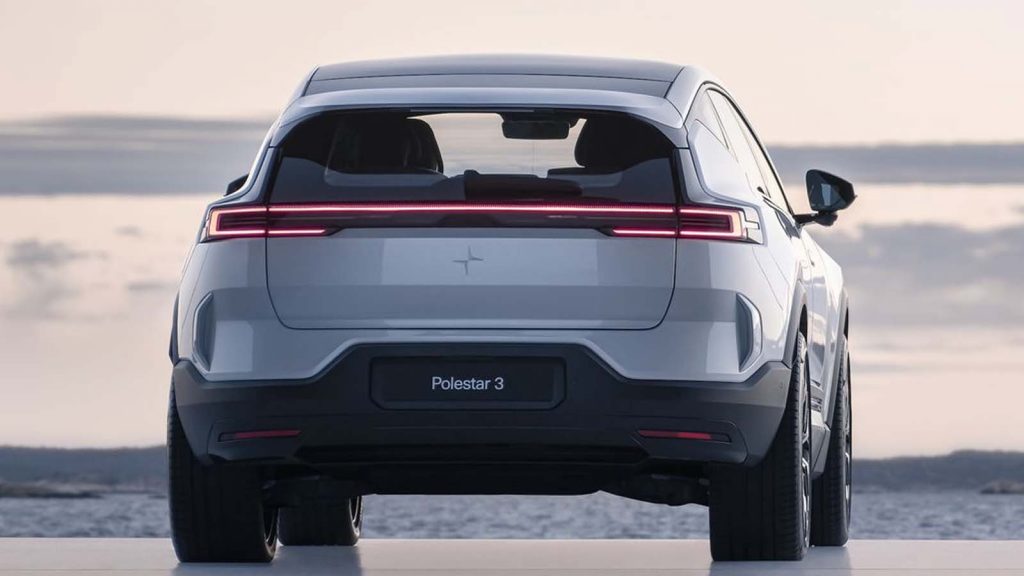We’ve got a Volvo CEO making some big prognostications, a discussion of battery tech, a Polestar earnings report, and Mercedes workers asking for a bit of change in today’s Dump.
Welcome to The Morning Dump, bite-sized stories corralled into a single article for your morning perusal. If your morning coffee’s working a little too well, pull up a throne and have a gander at the best of the rest of yesterday.
Volvo CEO Sees Price Parity Between EVs and ICE-powered Vehicles By 2025

The Volvo EX90 is a big deal and part of the brand’s play to establish itself as a major part of the electrified, semi-autonomous future. Our own Jason Torchinsky was there for the reveal and he confronted the head of Volvo’s design department about the touchscreen glovebox.
While that confrontation was happening, Urvaksh Karkaria from Automotive News managed to grab Volvo CEO Jim Rowan (formerly of Dyson) and ask him about the existing differences between the prices of gas-powered cars and their EV equivalents:
“We think we get [to price parity] … around 2025, where there’ll be enough technology that’s driving down cost on the battery,” Rowan told Automotive News Europe on the sidelines of a media event in Stockholm, Sweden. “Technology will drive range up. Less batteries, but more range, at less cost — we’ll get there.”
This quote is great because it highlights two of the main ways you can bring the cost of an electric vehicle down. Everyone thinks about the raw stuff of making a battery (lithium, cobalt, manganese, nickel, graphite, et cetera), but if you can make 1 kWh yield three miles of range as opposed to two miles of range then you can theoretically reduce the battery pack by 33% without sacrifice.
I really enjoyed this Car And Driver piece about whether you can make up the costs of an EV over three years and their determination was: Definitely (if you can get a tax credit).
The open question is: Will this scale? As we make more will they get cheaper as is dictated by basic economic principles or will materials scarcity or other issues eventually drive the price up?
Automakers Still Looking For Silver (Or Iron) Bullet For EVs

I’ve got a double-dose of Automotive News today as they have a great piece that dovetails nicely with the quote above: “Automakers and suppliers are spending to break through a ‘chemical plateau’”
A modern battery for a car has many requirements and for every advantage one chemistry has it often has a downside. Here are things we ask batteries to do:
- Store a lot of energy
- Absorb a lot of energy very quickly (charge fast)
- Store and disperse energy many times under varying conditions without losing significant capacity
- Be safe
- Be cheap
- Be easy to make
Yikes! I haven’t even showered this morning.
One solution could be solid state batteries, which is what companies like Nissan and Honda are looking into. They work well and are very energy dense…
But there are questions about whether battery makers would be able to produce solid-state batteries at scale in the price range that would satisfy automakers and keep prices low enough for consumers. In 2021, the average lithium ion battery pack cost between $147 and $153 per kilowatt-hour, accounting for between 30 percent and 40 percent of the total EV’s cost, according to SNE Research.
Another alternative is Lithium Iron Phosphate. The planet (and universe) is full of iron. It’s cheap. It’s safe. We’ve been using iron for about as long as human beings figured out they could melt and shape it. This chemistry, however, is not super energy dense.
Again, it’s worth reading the article as it breaks down the upsides and downsides of various approaches.
Mercedes Works Council Wants Bigger Bonuses For Workers

The Mercedes works council in Germany (this is the way European unions are generally organized) is asking the company for a big annual bonus. Why? The carmaker is making more money and it wants its fair share.
“So far, annual profit-sharing has been limited to a maximum of 6,450 euros ($6,617). This cap should be abolished,” Ergun Luemali told Reuters.
“We need a new calculation formula so that the workforce can now share in the increased profit if the return is kept at a significantly higher level,” he said.
Mercedes has reported strong earnings this year and there’s no sign that the fourth quarter is going to to be any different.
Polestar Is Losing Less Money!

Speaking of earnings reports, Polestar is out with its Q3 results, and the news is pretty good. The brand has lost money, but it’s less money.
The Geely-Volvo sister company lost $196 million, which is an improvement of the $293 million they lost in the same period last year. At the same time, revenues are on the rise. In the first nine months of 2021 the company made $748 million. Over the same period this year the company made $1.5 billion, which is a nice 98% increase.
What could go wrong? All sorts of things. My favorite part of any earnings report is when they have to list out, usually in small font, all the circumstances that could change that would impact their guidance. Here are some of the things Polestar thinks could go wrong, from the brand itself:
Polestar’s ability to continuously and rapidly innovate, develop and market new products; the impact of the global COVID-19 pandemic, new lockdowns in China, government mandated quarantines, inflation, interest rate changes, the ongoing conflict between Ukraine and Russia, cats and dogs living together, mass hysteria.
I may have added those last two.
Pick A Battery Chemistry
You’re starting an EV carmaker today and you’ve got a few billion dollars to spend on developing a battery pack. What are you doing in the short term and what are you planning for in the long-term?
